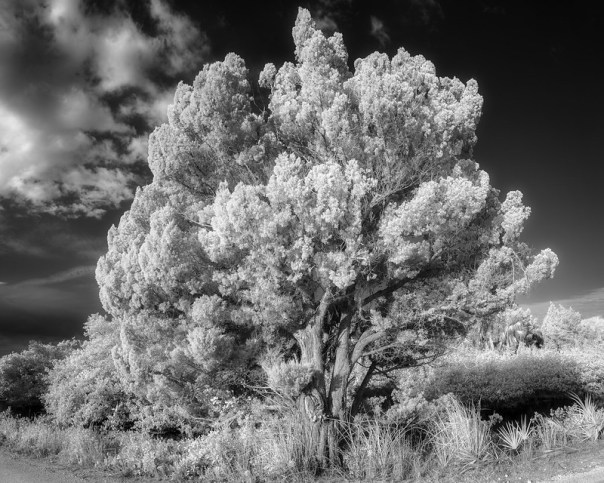Have you heard about Adobe’s recent update to Lightroom? It has a new feature called “Enhance Details”. Adobe says it:
“approaches demosaicing in a new way to better resolve fine details and fix issues like false colors and zippering. Enhance Details uses machine learning—an extensively trained convolutional neural network (CNN)—to provide state-of-the-art quality for the images that really matter.”
You can read an explanation of what they’ve done at this link: https://helpx.adobe.com/camera-raw/using/enhance.html. It sounds like a another fascinating advance in computational photography. It’s also a great example of why you should shoot in Raw mode and save your original files – so you can take advantage of future software updates. Of course I had to try this out!
 Wildflower and bug – processed in Lightroom with Enhanced Details (click for a larger view)
Wildflower and bug – processed in Lightroom with Enhanced Details (click for a larger view)
I chose this flower growing in Central Winds Park, near Lake Jesup as my subject. By the way, this is the same spot and subject as this 2015 blog post. There’s a lot of detail in the flower and insect and I was curious about how it would look using the new processing.
I ran Enhance Details on the Raw file. At first, I couldn’t really see any improvement. So I opened the original and enhanced images in layers in Photoshop. I set the layer mode to Difference and then used a levels adjustment to highlight changes.

Using this method at 300% magnification to guide me to where the changes were, I could then see them clearly. The enhanced image was indeed more detailed than the original. But (for this example anyway) they’re extremely subtle! Too subtle to show up in a blog resolution image without a difference map.
I did a little more research on-line and found this blog post: https://elialocardi.com/adobe-lightroom-camera-raw-enhance-details-review/. It’s got several samples where the differences are more obvious. Well worth a read.
Here are my thoughts:
- Adobe claims a 30% increase in image quality. I’m not sure how they derived this number, but from the examples I’ve seen the results are much more subtle than that.
- It works better on some subject than others, e.g. night photos of cities with lights, or images with artifacts. Improvements are much harder to see on other subjects such as my flower.
- I didn’t see (and haven’t heard of) anyplace where it made an image worse.
- You pay a penalty in workflow, time, and disk storage when using this. It shouldn’t be your default processing.
- Consider it for portfolio images, or photos that you’re printing in a large format. Don’t bother with it for images shared to the web or ones that you’re printing small. Keep your Raw files and you can always go back later and run them through.
- If you use Fuji cameras, try it on their X-Trans Raw files.
- We’ll hear more soon as the photo community explores this and we see results.
- In the future this or something like it will probably become the default demosaicing approach. Adobe should be commended and I hope they keep developing it
That was fun! Thanks for stopping by and reading my blog. Now – go make some photos!
©2019, Ed Rosack. All rights reserved









































